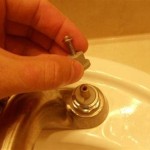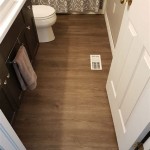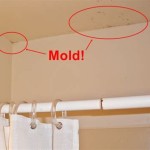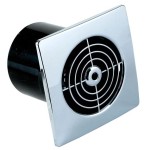How To Fix a Stinky Bathroom Sink
A persistent, unpleasant odor emanating from the bathroom sink drain is a common household problem. This issue, while sometimes embarrassing, is rarely a sign of a serious plumbing defect. The most likely cause is a buildup of organic matter within the drainpipe and P-trap, creating an environment conducive to bacterial growth. These bacteria then produce odorous gases, such as hydrogen sulfide, which are released into the bathroom.
Addressing a stinky bathroom sink requires a systematic approach to eliminate the source of the odor. This process typically involves cleaning the drainpipe, disinfecting the affected area, and implementing preventative measures to avoid future occurrences. Before attempting any cleaning methods, it's important to identify the potential causes and choose the most appropriate solution.
Identifying the Source of the Odor
Pinpointing the exact origin of the smell is the first step in resolving the problem. While the odor seems to be coming from the sink drain, it's crucial to rule out other possibilities. A faulty toilet wax ring, mildew growth around the shower, or even a dirty shower curtain can contribute to a general unpleasant odor in the bathroom. Ensure these areas are clean and properly maintained before focusing solely on the sink drain.
The P-trap, the curved section of pipe beneath the sink, is specifically designed to trap water. This water barrier prevents sewer gases from entering the bathroom. If the sink has not been used for an extended period, the water in the P-trap might evaporate, allowing these gases to escape. Running the water for a few minutes should replenish the trap and eliminate the odor in this situation. If the smell persists after running water, the P-trap likely contains accumulated debris.
Examine the sink overflow drain, a small opening usually located near the top of the sink basin. This drain prevents the sink from overflowing. However, it can also trap hair, soap scum, and other debris, creating a breeding ground for bacteria. This area is often overlooked during routine cleaning and can be a significant source of unpleasant odors. Check the overflow drain for visible debris and signs of buildup.
Consider the frequency of sink usage and the types of products used. Sinks that are used infrequently may be more prone to odor problems due to stagnant water and a lack of flushing action. Certain products, such as oily soaps or hair styling products, can contribute to a faster buildup of residue within the drainpipe.
Cleaning the Drain: A Step-by-Step Guide
Once the source of the odor is reasonably identified as originating from the drain itself, a thorough cleaning is necessary. Several methods can be employed, ranging from simple home remedies to more intensive chemical treatments. Start with the gentlest approach and escalate as needed.
1. Flushing with Hot Water: The simplest solution is often the most effective. Run hot water down the drain for several minutes. This can help to dislodge loose debris and flush away some of the buildup. For optimal results, use the hottest water available from the tap. Be cautious when using extremely hot water, especially in older plumbing systems, as it could potentially damage pipes or seals. This method works best as a preventative measure and may not be sufficient for heavily clogged drains.
2. Baking Soda and Vinegar: This classic combination creates a chemical reaction that helps to break down organic matter. Pour about one cup of baking soda down the drain, followed by one cup of white vinegar. Let the mixture fizz for approximately 30 minutes. The bubbling action helps to loosen debris and neutralize odors. After 30 minutes, flush the drain with hot water. This method is generally safe for all types of pipes and is a good option for regular maintenance.
3. Using a Drain Snake: A drain snake, also known as a plumbing snake, is a flexible tool used to physically remove obstructions from drainpipes. Insert the snake into the drain opening and carefully push it down until you encounter resistance. Rotate the handle to break up the blockage and then slowly pull the snake back out, removing any debris that is attached. Clean the snake thoroughly after each use. This method is effective for removing hair, grease, and other solid obstructions.
4. Cleaning the P-Trap: If the above methods fail, it may be necessary to disassemble and clean the P-trap directly. Place a bucket under the P-trap to catch any water and debris. Carefully loosen the slip nuts that connect the P-trap to the drainpipes. Be prepared for water to spill out as the trap is detached. Once the P-trap is removed, inspect it for any accumulated debris and clean it thoroughly with a brush and soapy water. Reassemble the P-trap, ensuring that the slip nuts are tightened securely to prevent leaks. This method is very effective for removing stubborn clogs but requires some basic plumbing knowledge.
5. Cleaning the Overflow Drain: Use a small brush, such as a bottle brush or toothbrush, to scrub the inside of the overflow drain. You can also use a pipe cleaner or cotton swab to reach into the drain and remove any accumulated debris. Pour a solution of diluted bleach (1 part bleach to 10 parts water) into the overflow drain to disinfect it. Let the solution sit for a few minutes and then flush with water. Exercise caution when using bleach and ensure proper ventilation. This method is essential for eliminating odors originating from the overflow drain.
6. Enzyme Cleaners: Enzyme cleaners contain beneficial bacteria that break down organic matter. These cleaners are a more environmentally friendly alternative to harsh chemical drain cleaners. Follow the manufacturer's instructions for application. Typically, you will pour the cleaner down the drain and let it sit overnight. Enzyme cleaners are particularly effective for breaking down grease and food particles. This method is a good option for regular maintenance and preventing future clogs.
7. Chemical Drain Cleaners: Chemical drain cleaners should be used as a last resort, as they can be corrosive and potentially damage pipes. Follow the manufacturer's instructions carefully and wear appropriate safety gear, such as gloves and eye protection. Chemical drain cleaners can release harmful fumes, so ensure proper ventilation. Consider the type of pipes you have (e.g., PVC, metal) before using a chemical cleaner, as some cleaners are not compatible with certain materials. This method should be used sparingly and only when other methods have failed.
Preventative Measures to Avoid Stinky Drains
Preventing the buildup of debris and bacteria in the drain is crucial for maintaining a fresh-smelling bathroom. Simple habits and regular maintenance can significantly reduce the likelihood of recurring odor problems.
1. Regular Flushing: Run hot water down the drain for a minute or two after each use. This helps to flush away any soap scum, hair, or other debris that may be clinging to the inside of the pipe. Making this a routine habit will prevent the accumulation of organic matter over time.
2. Strainers: Install a strainer in the sink drain to catch hair and other debris. This will prevent these materials from entering the drainpipe and contributing to clogs. Clean the strainer regularly to remove any collected debris. Strainers are inexpensive and easy to install.
3. Avoid Pouring Grease Down the Drain: Grease solidifies as it cools, creating a sticky residue that can clog drainpipes. Instead of pouring grease down the drain, collect it in a container and dispose of it properly. This is particularly important for preventing stubborn clogs that are difficult to remove.
4. Periodic Baking Soda and Vinegar Treatment: As mentioned earlier, a mixture of baking soda and vinegar is an effective way to clean and deodorize the drainpipe. Perform this treatment regularly, such as once a month, to prevent the buildup of organic matter. This is a simple and inexpensive way to maintain a clean and odor-free drain.
5. Enzyme Cleaner Maintenance: Using an enzyme cleaner periodically, according to the manufacturer's instructions, can help to break down organic matter and prevent clogs. This method is particularly effective for breaking down grease and food particles. Enzyme cleaners are a safe and environmentally friendly option for drain maintenance.
6. Professional Plumbing Inspection: If the odor problem persists despite your best efforts, it may be necessary to consult a professional plumber. They can inspect the drain system for any hidden issues, such as a damaged or improperly installed P-trap, and provide more advanced cleaning or repair services. A professional inspection can identify and address problems that are not readily apparent.
By understanding the causes of stinky bathroom sink drains and implementing these cleaning and preventative measures, it is possible to maintain a fresh and odor-free bathroom environment. Consistent maintenance and proactive measures are key to preventing future occurrences of unpleasant smells emanating from the sink.

How To Clean A Stinky Sink Drain By Home Repair Tutor

How Can I Help A Stinky Bathroom Sink Drain Cleaning More

How To Clean A Smelly Sink
:max_bytes(150000):strip_icc()/__opt__aboutcom__coeus__resources__content_migration__mnn__images__2018__08__sink_drain-351af8e441034f319fe07f00c091d8b6.jpg?strip=all)
How To Clean A Smelly Drain Naturally

How To Get Rid Of The Stinky Sink Kmac Singapore

How Can I Help A Stinky Bathroom Sink Drain Cleaning More

How To Fix A Stinky Sink Big Bathroom

Why Your Drain Smells And How To Fix It Fast

How To Clean Stinky Drains Liquid Plumr

Why Your Bathroom Sink Drain Smells
Related Posts







